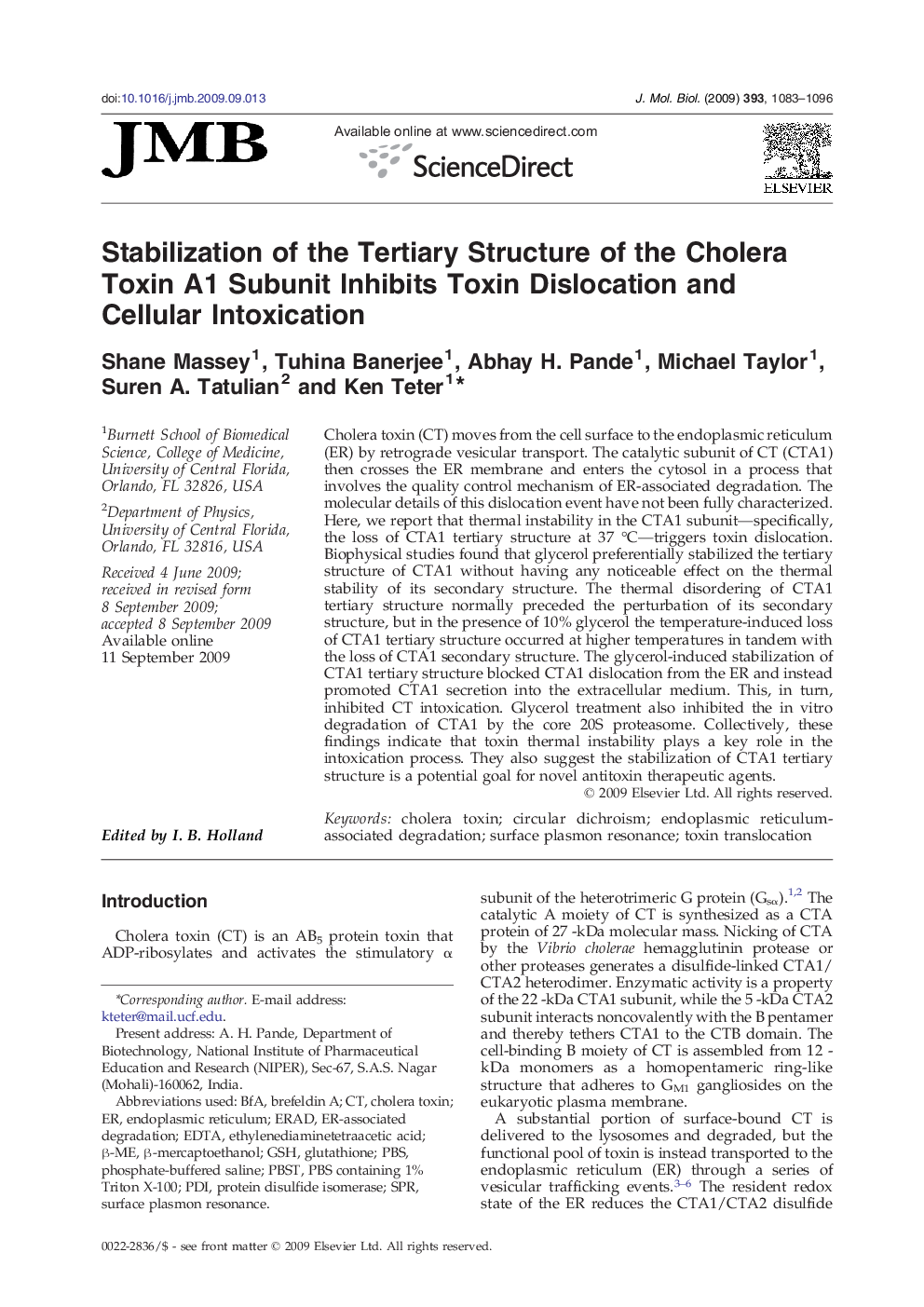| Article ID | Journal | Published Year | Pages | File Type |
|---|---|---|---|---|
| 2186322 | Journal of Molecular Biology | 2009 | 14 Pages |
Cholera toxin (CT) moves from the cell surface to the endoplasmic reticulum (ER) by retrograde vesicular transport. The catalytic subunit of CT (CTA1) then crosses the ER membrane and enters the cytosol in a process that involves the quality control mechanism of ER-associated degradation. The molecular details of this dislocation event have not been fully characterized. Here, we report that thermal instability in the CTA1 subunit—specifically, the loss of CTA1 tertiary structure at 37 °C—triggers toxin dislocation. Biophysical studies found that glycerol preferentially stabilized the tertiary structure of CTA1 without having any noticeable effect on the thermal stability of its secondary structure. The thermal disordering of CTA1 tertiary structure normally preceded the perturbation of its secondary structure, but in the presence of 10% glycerol the temperature-induced loss of CTA1 tertiary structure occurred at higher temperatures in tandem with the loss of CTA1 secondary structure. The glycerol-induced stabilization of CTA1 tertiary structure blocked CTA1 dislocation from the ER and instead promoted CTA1 secretion into the extracellular medium. This, in turn, inhibited CT intoxication. Glycerol treatment also inhibited the in vitro degradation of CTA1 by the core 20S proteasome. Collectively, these findings indicate that toxin thermal instability plays a key role in the intoxication process. They also suggest the stabilization of CTA1 tertiary structure is a potential goal for novel antitoxin therapeutic agents.
